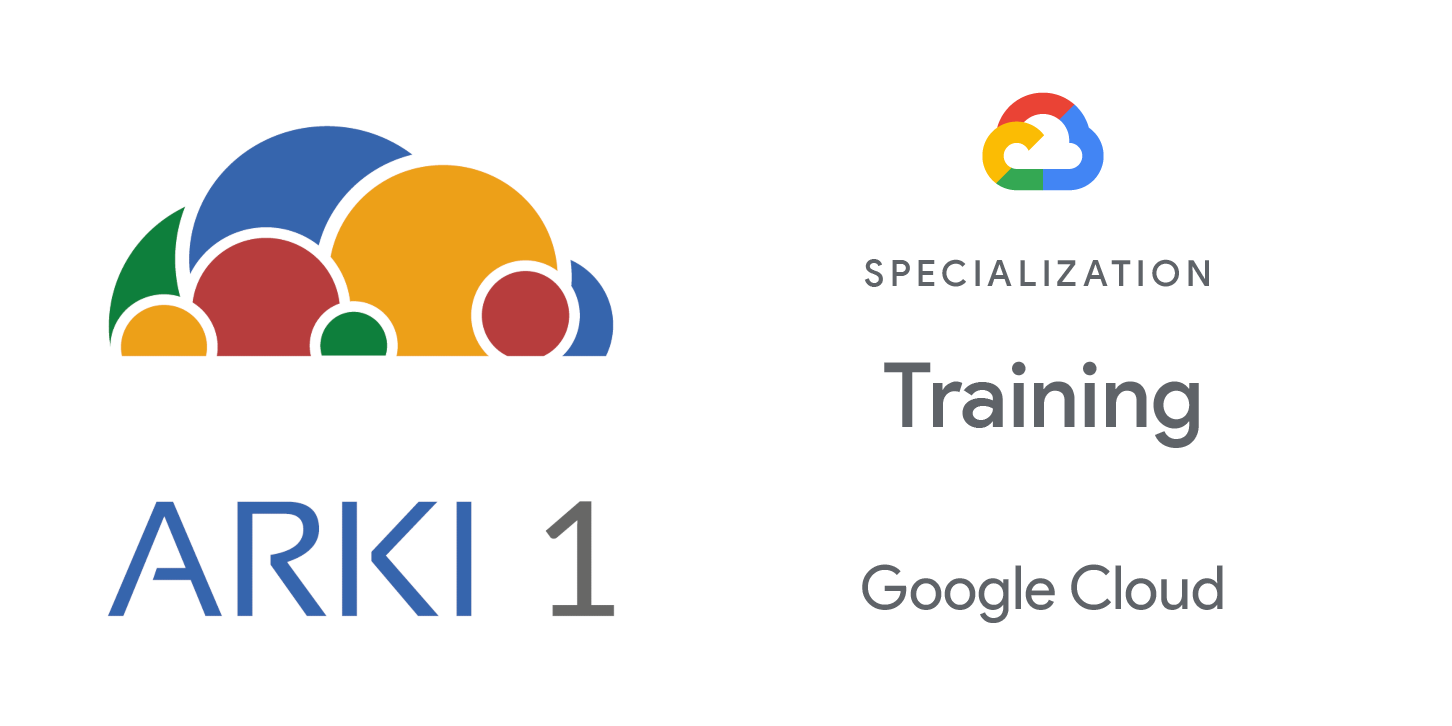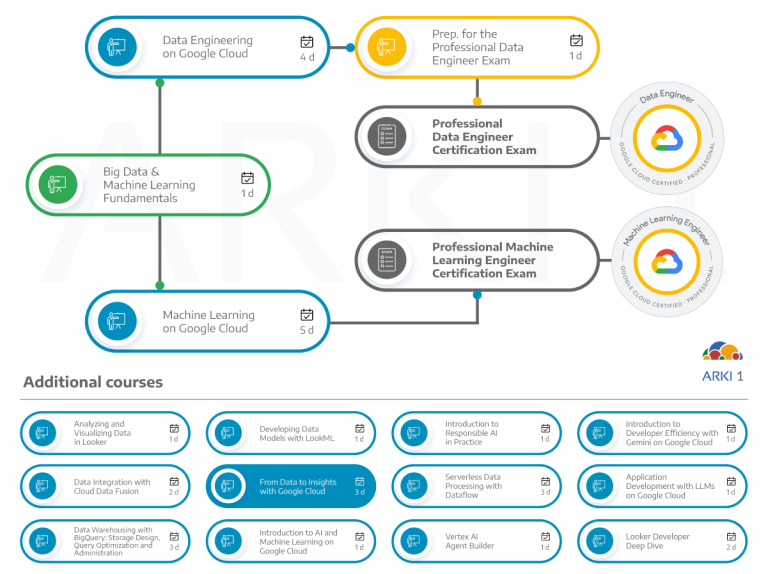Explore maneiras de obter insights a partir de dados em grande escala usando o BigQuery, o data warehouse em nuvem da Google Cloud que é sem servidor, altamente escalável e rentável. Este curso utiliza palestras, demonstrações e laboratórios práticos para ensinar os fundamentos do BigQuery, incluindo como criar um pipeline de transformação de dados, construir um dashboard de BI, ingerir novos conjuntos de dados e projetar esquemas em escala.
Objetivos
Neste curso, os participantes aprenderão as seguintes habilidades:
- Obter insights a partir de dados usando as ferramentas de análise e visualização do Google Cloud.
- Carregar, limpar e transformar dados em grande escala com o Dataprep.
- Explorar e visualizar dados usando o Looker Studio.
- Solucionar problemas, otimizar e escrever consultas de alto desempenho.
- Praticar com APIs de ML pré-construídas para compreensão de imagens e texto.
- Treinar modelos de classificação e previsão de ML usando SQL com o BigQuery ML.
Público-Alvo
Esta aula destina-se ao seguinte público:
- Analistas de dados, analistas de negócios, profissionais de inteligência de negócios.
- Engenheiros de dados em nuvem que irão colaborar com analistas de dados para construir soluções de dados escaláveis no Google Cloud.
Pré-requisitos
Para aproveitar ao máximo este curso, os participantes precisam atender aos seguintes critérios:
- Ter concluído o curso Google Cloud Fundamentals: Core Infrastructure ou possuir experiência equivalente.
- Proficiência básica com ferramentas de linha de comando e ambientes do sistema operacional Linux.
- Proficiência básica em ANSI SQL.
Duração
3 dias
Investimento
Consulte o valor atualizado e próximas datas para turmas abertas em nossa página de inscrições. Caso tenha interesse em uma turma fechada para sua empresa, entre em contato conosco.
O curso inclui apresentações, demonstrações e laboratórios práticos.
- Compare data infrastructure on-premises versus on Google Cloud.
- Identify data analyst tasks and challenges, and introduce Google Cloud data tools.
- Explore nine fundamental BigQuery features.
- Compare the differences in roles and toolsets between data analysts, data scientists, and data engineers.
- Access the BigQuery web UI and explore a public dataset with basic SQL.
- Compare common data exploration techniques.
- Identify the key components of a basic SQL SELECT statement and common pitfalls.
- Discuss the basics of SQL functions and how they create calculated fields with input parameters.
- Explore BigQuery public datasets.
- Troubleshoot dataset quality issues by analyzing duplicate records with SQL in the BigQuery Web UI.
- Characterize different dataset shapes and potential skew.
- Clean and transform data using SQL.
- Clean and transform data using Dataprep.
- Compare data visualizations and make recommendations for improvement.
- Create dashboards and visualizations with Looker Studio.
- Differentiate between permanent and temporary data tables.
- Identify what types and formats of data BigQuery can ingest.
- Differentiate between native BigQuery table storage and external data source connections.
- Load new data into BigQuery.
- Explain when to use UNIONs and when to use JOINs.
- Identify the key pitfalls when joining and merging datasets.
- Differentiate between join types visually.
- Explain how union wildcards work and when to use them.
- Write SQL JOINs and UNIONs against a dataset in the BigQuery web UI.
- Identify the available statistical approximation functions and userdefined functions.
- Apply large-scale record estimation with approximate aggregation functions.
- Deconstruct an analytical window query and explain when to use RANK() and PARTITION.
- Explain when to use Common Table Expressions (WITH) to break apart complex queries.
- Differentiate between BigQuery and traditional data architecture.
- Work with ARRAYs and STRUCTs as part of nested fields in data schemas.
- Identify BigQuery performance pitfalls.
- Discuss the Query Explanation map and how to interpret MAX and AVG processing times per stage.
- Describe how to analyze and troubleshoot broken queries
- Review data access roles within Google Cloud and BigQuery.
- Highlight key data access pitfalls and how to avoid them.
- Explain how ML on structured data drives value.
- Describe how customer LTV can be predicted with an ML model.
- Choose the right model type for different structured data use cases.
- Create ML models with SQL.
- Discuss how ML is able to drive business value.
- Explain how ML on unstructured data works.
- Differentiate between pre-built ML models, custom models, and new models when considering an AI application strategy.


